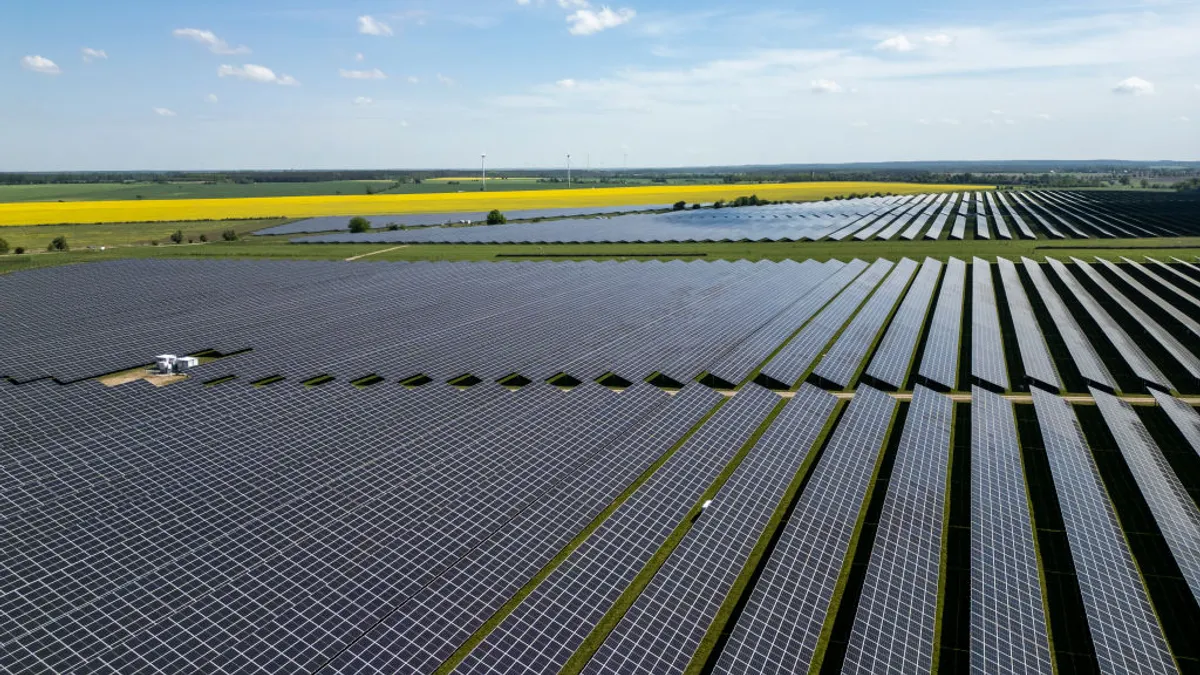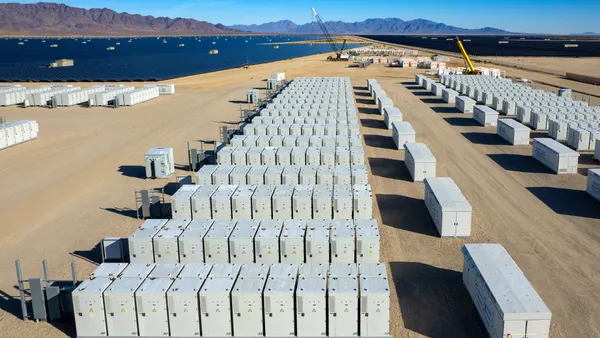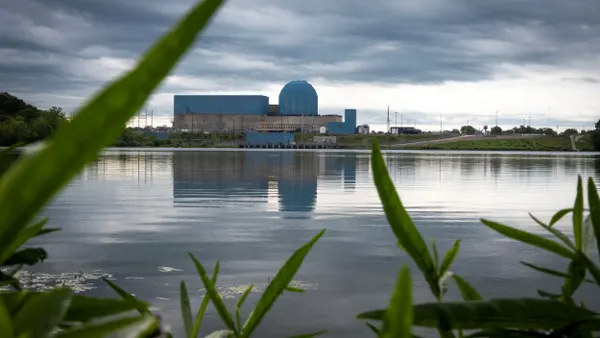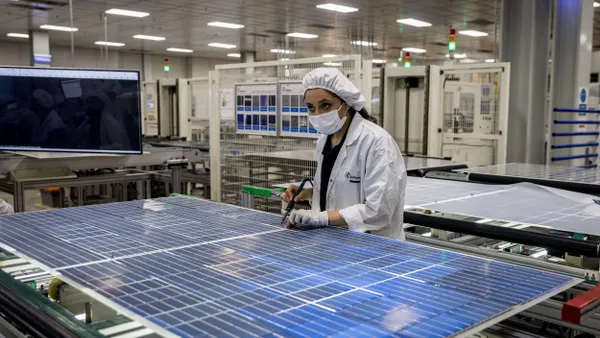Dive Brief:
-
The U.S. doubled its solar cell manufacturing capacity and added 8.6 GW of solar module manufacturing capacity in the first quarter of 2025, marking the third-largest quarter for new solar manufacturing capacity on record, according to a report by Wood Mackenzie for the Solar Energy Industries Association.
-
Despite the strong first quarter figures, Wood Mackenzie expects the solar industry to contract about 2% annually between 2025-2030, adding an average 43 GW of new solar generation per year in that time. New solar installations are expected to decline 7% between 2025-2027.
-
Wood Mackenzie's projections for the solar industry do not take the proposed wind-down of clean energy tax credits that has passed the House into account. Cutting the tax credits could trigger project cancellations and a possible energy shortage, according to Sean Gallagher, senior vice president of policy for SEIA.
Dive Insight:
Despite growing demand for energy, the solar industry faces a rocky road over the next few years — particularly if the Senate concurs with renewable energy tax credit cuts that have already passed the House, according to this week's report from Wood Mackenzie and SEIA.
Solar manufacturing posted particularly strong growth in the first quarter of 2025, though Wood Mackenzie notes that the growth upstream manufacturing of solar components, especially polysilicon and wafers, “remains slow or non-existent.”
New solar generation capacity totaled 10.8 GW, 7% lower than first quarter installations in 2024 and 43% lower than the fourth quarter of 2024 — but still the fourth largest quarter for deployment on record, according to the report.
The first quarter records don't appear to represent an attempt by the industry to wrap up projects before the potential application of new tariffs or cuts to applicable tax credits, Gallagher said. Most of the projects that came online in the first quarter would have been in the works for months prior, and so any last-minute push by the industry won't be felt until later, he said.
Massive growth in the demand for electric generation should support new solar projects long-term, Gallagher said. Wood Mackenzie reports that it is tracking 140 GW of new demand from data centers, up from 50 GW a year ago. And while data center operators have expressed an interest in generation alternatives such as nuclear and natural gas, long development timelines and supply chain constraints mean that solar is the only resource able to meet the most immediate demand, Gallagher said.
But changes to federal tax credits could jeopardize near-term solar development, he said. The next tranche of solar project has already signed contracts with certain assumptions about the availability of tax credits in place, and a rapid wind-down of those tax credits could render these projects uneconomic, triggering cancellations or delays as contracts are renegotiated.
The budding growth of domestic solar manufacturing, Gallagher said, also remains heavily reliant on federal incentives — and not just direct incentives for the manufacturers themselves, but also incentives such as the bonus credits for energy projects that use U.S.-made components.
The legislation before the Senate, Gallagher said “would really dismantle the greatest industrial revival that we have seen in the U.S. in decades, if not ever. And by suppressing the installation of new solar and energy storage resources, the House bill will trigger a dangerous energy shortage.”














